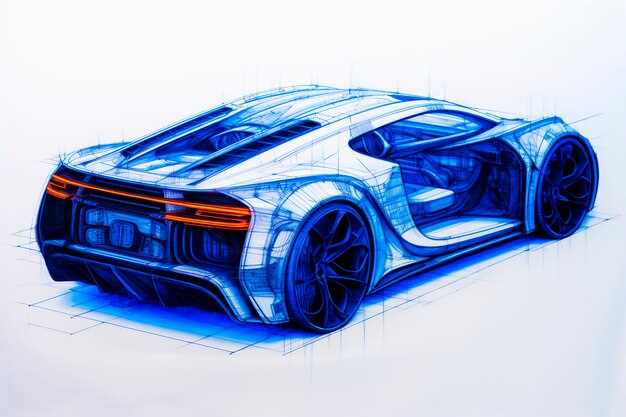
The pursuit of perfection in automotive design is a multifaceted journey that intertwines engineering prowess, artistic vision, and cutting-edge technology. Among the critical components that influence a car’s efficiency and performance, aerodynamics stands out as a pillar of innovation. Exotic cars, often characterized by their striking aesthetics and unparalleled speed, are particularly reliant on sophisticated aerodynamic principles to achieve their goals.
Aerodynamics refers to the study of how air interacts with moving objects, and in the context of high-performance vehicles, it can significantly impact acceleration, fuel efficiency, and stability. As manufacturers aspire to create the ultimate driving machines, they invest heavily in research and development to optimize shapes, materials, and designs that minimize drag while maximizing downforce. This complex balancing act not only enhances speed but also contributes to vehicle safety and handling, especially at high velocities.
In this article, we will delve into the intricate world of exotic car design, focusing on the methodologies employed to achieve optimal aerodynamic performance. From computational fluid dynamics simulations to real-world wind tunnel testing, we will explore the innovative strategies utilized by leading automotive pioneers to push the boundaries of what is possible. Understanding these principles is crucial for enthusiasts and aspiring designers alike, as they illuminate the relationship between form and function in the realm of exotic automobiles.
Utilizing Computational Fluid Dynamics to Enhance Body Shape

Computational Fluid Dynamics (CFD) is a powerful tool that plays a crucial role in the design of exotic cars, specifically in optimizing their aerodynamic performance. By simulating the flow of air around a vehicle, designers can analyze various body shapes and their effects on drag and lift forces. This method allows for the assessment of aerodynamic performance without the need for costly physical prototypes or extensive wind tunnel testing.
One of the primary advantages of employing CFD in automotive design is its ability to iterate quickly through multiple design options. Engineers can modify the vehicle’s contours, including the curvature of the body panels, the angle of the windshield, and the shape of the rear end, to determine the most efficient configuration. These simulations enable teams to visualize airflow patterns, identify areas of turbulence, and locate potential drag sources. Such insights are paramount in making informed adjustments to streamline the body shape.
Moreover, CFD enables the examination of complex interactions between different components, such as spoilers, diffusers, and side skirts. These elements can significantly influence overall aerodynamics, and CFD allows for the optimization of their shapes and positions. By assessing how these parts work together with the vehicle’s body, designers can enhance downforce while minimizing drag, achieving a balance that is essential for high-performance exotic cars.
The precision of CFD modeling also aids in understanding real-world conditions such as crosswinds and varying speeds. Simulations can account for different environmental factors, providing a more comprehensive evaluation of aerodynamic performance under diverse driving conditions. This capability ensures that designers create cars that not only perform well in controlled environments but also excel in realistic driving scenarios.
Furthermore, as the complexity of car designs increases, so does the necessity of integrating CFD with other digital tools such as Finite Element Analysis (FEA). This holistic approach allows engineers to explore the relationship between aerodynamics, structural integrity, and thermal management, ensuring that enhancements in body shape do not compromise safety or performance. Such integration leads to well-rounded designs that excel across multiple performance metrics.
In conclusion, utilizing Computational Fluid Dynamics is essential in the modern design process of exotic cars. By leveraging advanced simulations, designers can create optimized body shapes that enhance aerodynamic efficiency, ultimately translating into superior speed, stability, and fuel efficiency. As technology continues to advance, the role of CFD will only expand, leading to even more innovative and high-performing automotive designs.
Integrating Active Aerodynamics Systems for Real-Time Performance Adjustments

Active aerodynamics systems represent a significant advancement in automotive design, particularly for exotic cars, where performance and speed are paramount. These systems adapt aerodynamics in real time, responding to various driving conditions to optimize overall efficiency and stability.
One of the core components of active aerodynamics is the adjustable rear wing. By varying its angle of attack, the wing can generate more downforce during high-speed maneuvers, ensuring better traction and handling. Conversely, when cruising or traveling at lower speeds, the wing can retract or flatten to reduce drag, enhancing fuel efficiency and achieving higher top speeds.
Front splitters and dive planes can also be integrated with active controls. These elements can automatically adjust their position based on factors such as speed, steering angle, and throttle input. This real-time responsiveness allows for an optimal balance between downforce and drag, leading to improved stability in various driving scenarios.
Another innovative feature is the use of active grille shutters. These devices open and close to regulate airflow into the engine bay and around the vehicle. By optimizing airflow, designers can mitigate aerodynamic drag during high-speed driving while facilitating engine cooling when necessary, thus improving thermal efficiency and performance.
Incorporating sensors and software algorithms is essential for the efficient operation of these systems. Sensors collect data on speed, acceleration, and environmental conditions, while algorithms process this information to make instantaneous adjustments. This integration ensures that the vehicle maintains optimal aerodynamic performance under changing conditions, like cornering or sudden acceleration.
Moreover, advanced materials and construction techniques contribute to the effectiveness of active aero components. Lightweight materials, such as carbon fiber, enhance responsiveness without adding significant weight, allowing for quicker adjustments and greater overall performance.
Integrating active aerodynamics systems requires meticulous design and engineering to ensure reliability and effectiveness. Continuous testing and simulations during the development phase help identify optimal settings and configurations that maximize aerodynamic performance and contribute to the car’s overall design ethos.
In conclusion, the integration of active aerodynamics systems in exotic car design is vital for achieving superior performance. By allowing real-time adjustments to aerodynamic elements, these systems enhance handling, stability, and efficiency, ultimately leading to a thrilling driving experience.
Material Selection for Lightweight Structures and Reduced Drag
The performance of exotic cars heavily relies on the right choice of materials, particularly in achieving a balance between lightweight structures and aerodynamic efficiency. Utilizing advanced materials not only contributes to reduced weight but also enhances the car’s overall performance by minimizing drag.
Carbon Fiber Reinforced Polymers (CFRP) are among the most favored materials in the automotive industry due to their high strength-to-weight ratio. These composites can be engineered to specific performance requirements, providing structural integrity while significantly reducing weight compared to traditional metals. Their application in body panels and chassis components contributes to better aerodynamics by allowing for more intricate shapes that can reduce airflow turbulence.
Aluminum alloys also play a crucial role in material selection. Lightweight yet highly durable, aluminum is commonly used in the construction of frames and bodywork. Its corrosion resistance further enhances longevity, making it a practical choice for high-performance environments. Furthermore, aluminum can be easily formed into aerodynamically efficient shapes, thus decreasing drag coefficients.
Magnesium alloys offer another lightweight alternative with excellent mechanical properties. Though less common than carbon fiber or aluminum, magnesium is the lightest structural metal, allowing for optimized design solutions that maintain structural integrity while minimizing weight. The strategic use of magnesium can effectively lower the center of gravity and enhance handling dynamics.
Innovations in composites, such as natural fiber-reinforced materials, are emerging as environmentally sustainable options. Materials like hemp or flax not only reduce weight but also contribute to lower environmental impact. As the automotive industry moves toward sustainability, these composites could become increasingly relevant in the design of high-performance vehicles.
Ultimately, the selection of materials must consider both mechanical properties and aerodynamic characteristics. The integration of lightweight materials like CFRP, aluminum, and magnesium allows for the design of dynamic shapes that streamline airflow, significantly reducing drag. This is vital for achieving optimal performance while promoting fuel efficiency and enhancing driving experience.

